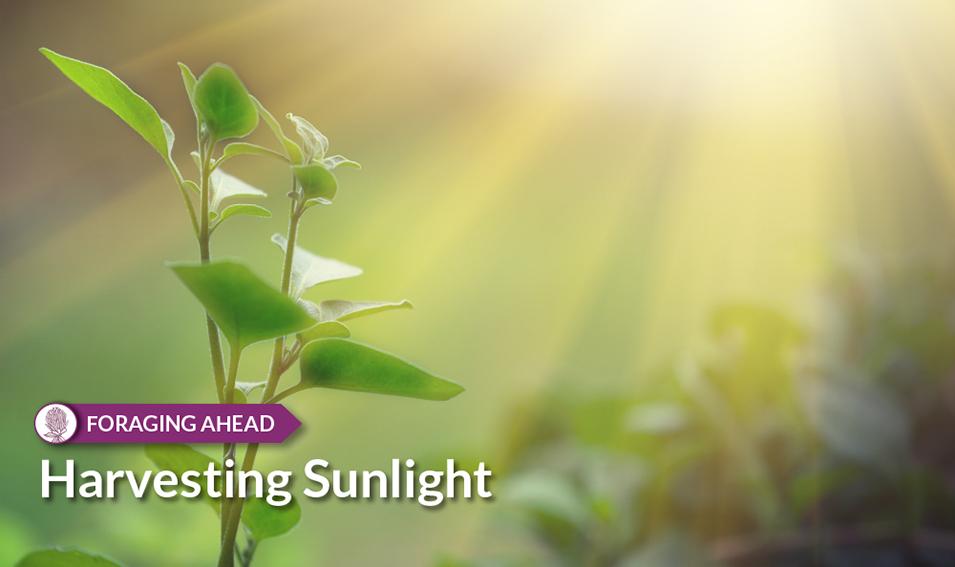
Most people, including cattlemen, don’t spend much time thinking about sunlight. They notice whether it’s a cloudy or sunny day, but thoughts about sunlight usually relate mainly to practical matters such as how warm the day will likely be, whether it’s likely to rain, or whether one needs to try to find his or her sunglasses. Most people rarely think about the importance of sunlight to plants (including forage crops), to animals, and to humans.
The most important process in nature
Photosynthesis, often referred to as the most important process in nature, is the process by which plants make food. Without it, there would be no life on earth. As you may remember from school, the basic process is defined by the following formula: 6 CO2 + 6 H20 = C6H1206 + 602. If put in words, this means six carbon dioxide molecules plus six water molecules can yield (via photosynthesis) one molecule of a simple carbohydrate (food) and six molecules of oxygen.

Plants get carbon dioxide from the air and water mostly from the soil. A bonus of the photosynthesis process is that oxygen is released into the air, which is important for several reasons, including the fact that we need it to breathe. Photosynthesis only takes place in plant tissue that contains chlorophyll, and sunlight is required to provide the energy that makes the process work.
A huge solar collector
The leaves in a pasture can collectively be compared to a huge solar collector. No photosynthesis takes place at night when plants are dormant, or when sunlight is totally blocked from reaching leaves, or when leaves are dead. The last two situations provide reasons why stocking rate and grazing method are important. If a pasture is overgrazed and there isn’t much leaf area, the solar collector is small, and thus food production is limited.
Conversely, if a pasture is undergrazed, forage will accumulate, and lower leaves will be shaded. Also, leaves typically only live for 30 to 60 days and then die. An undergrazed pasture contains many dead and dying leaves that are not as efficient, and thus it is, in essence, a less effective solar collector.

About 85 percent of the body of a beef animal is carbon, hydrogen and oxygen. As everyone knows, other nutrients are also essential for plant growth, including nitrogen, phosphorus, potassium, calcium, magnesium, sulfur and several micro-nutrients. However, it is remarkable that the three elements used in the greatest amounts are normally readily available in nature, and it usually doesn’t cost a livestock producer anything to provide them (which might be a comforting thought the next time you pay a pasture fertilizer bill!).
The sunlight required to grow the forage cattle eat is free as well, though it likely will be necessary to spend some time, energy and money building fences, moving cattle or otherwise making adjustments that allow the solar collectors (pasture plants) to operate efficiently. A rude reminder of how important sunlight is to forage/livestock production occurs from time to time, especially in winter. If there is a long period of cloudy, dark days, forages won’t make much growth regardless of soil fertility, soil moisture or temperatures. Make no mistake about it, the amount of forage a pasture produces, the amount of pounds cattle gain on the pasture and the amount of money a livestock producer makes are all dependent on sunlight.
Foraging Ahead is a bi-weekly column presented by Ragan & Massey and written by Dr. Don Ball, Professor Emeritus at Auburn University. Dr. Ball is one of the authors of the popular book, “Southern Forages,” available here.
Follow Ragan & Massey!
Be sure to follow Ragan & Massey on Facebook for daily updates, and check back here every week for more in-depth expertise, advice and product updates.
